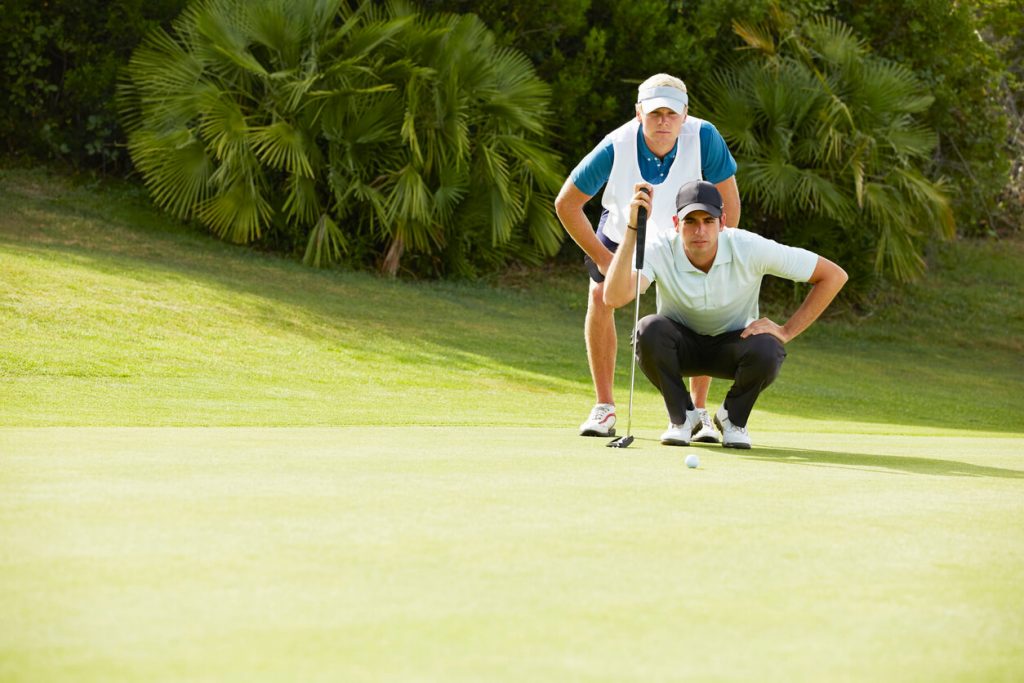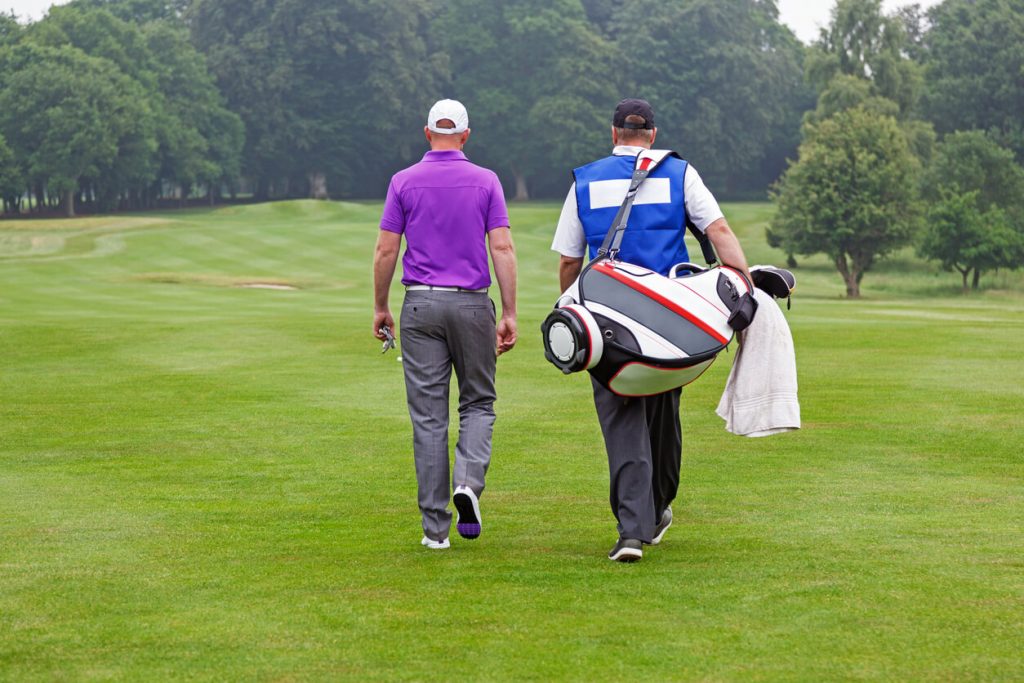If you’re nuts about golf, the life of a Tour caddie might well look seriously appealing. You’re inside the ropes at the big tournaments, working cheek by jowl with a tour player, travelling the world (usually following the sun), and, if you’re especially lucky, earning a very tidy sum.
The story that Steve Williams was the highest-paid sportsperson from New Zealand when he caddied for Tiger Woods was not a myth. But how do you make this seemingly desirable life in a game you love a reality?
How to become a golf caddie
The short answer is: there is no short answer.
Caddying has no college, no training centre, no qualifications and no ladder, so there are several routes to becoming a golf caddie. The most important thing you require—arguably—is luck.
That said, there are several things you can do to improve your chances of ending up on the bag of a Major winner; a fat cheque in your pocket and the status that goes with being part of a ‘team’ that won one of the ‘big ones’.
A love of golf is a prerequisite to becoming a caddie, as is plenty of knowledge about the game. So far, so obvious—except you WILL categorically find caddies on tour who aren’t hugely into the game. They are exceptions, though, and being a golf nut definitely helps.

Being a good player yourself isn’t a bad thing either; whenever Rory McIlroy is asked about his caddie Harry Diamond, he always says what a fine player he is. Nick Faldo’s caddie through most of his Major wins, Fanny Sunesson, is a strong golfer, too. Matt Fitzpatrick’s caddie Billy Foster—who has also looped for everyone from Seve Ballesteros and Tiger to Greg Norman, Lee Westwood and Darren Clarke—is also a low-handicap player.
Reading putts is a key part of being a caddie, so your ability to read your own putts successfully is a bit of a guide in this regard. Other technical qualities you need to become a golf caddie include the ability to ‘club’ the player—adding in the wind, elevation, temperature, and ground conditions to the actual yardage.
Less technical (but just as valuable) is the nous to determine whether the golfer needs to attack or play safe, and whether adrenaline may be affecting their state of mind.
What the pro caddies say

“You need to be able to read your golfer, whether they’re about to play their approach at the 18th in The Open while in contention or whether Chuck from Nashville is hacking his way up the 5th hole at Kingsbarns, having lost six balls already,” says former Ladies European Tour caddie Paul MacMichael.
“The need for a combination of awareness and emotional intelligence is crucial,” adds MacMichael, who has caddied for the likes of Anna Nordqvist in various ladies’ Majors.
He’s a former PE teacher whose route into caddying is not untypical in its sliding doors moments.
From driving courtesy cars at the McDonalds Ladies Championship of Europe at Gleneagles, he got to know Maria Hjorth, and through her, Karin Sjodin. He agreed to caddie for her at the Women’s British Open final qualifying—and fast-forward eight years; he’s looped for the likes of Pernilla Lindberg, Nordqvist, Birdie Kim, Michele Thomson, and Laura Murray (now Beveridge), walking the fairways at several Women’s British Opens, Ladies Scottish Opens and the Irish Open.
“My route into caddying was simply being around tournaments and speaking to people,” he says.
“As in most walks of life, personal contacts are invaluable, and most caddie-golfer arrangements come about through word of mouth and sometimes social media.
“However, the best route to becoming a caddie is arguably to know a golfer who is about to break into the lofty ranks of the tour and to hold on to their shirt tails.”

Hanging around the top amateur events, getting to know the next generation of superstars, and perhaps carrying their bag for a round or two is a sensible way to give yourself a chance of a toe in the door. And when your man or woman turns pro, they might just give you the call-up.
MacMichael’s experience and reputation on the LET may well have led to him having success on the more lucrative European Tour.
The LET is another good option; money is tight there, and the players won’t usually have a caddie, but offering your services and building up a reputation and experience there is a wise move. MacMichael went in another direction, though. He now caddies for ‘Chuck from Nashville’ et al. at Gleneagles.
“Any venue that runs a caddie programme will have a Caddie Master—they’re the person to contact,” he explains.
“Most courses will have their caddie roster for the year finalised for the beginning of the season, so any approach is probably best made during the month of March. Some venues will arrange a training programme for new recruits.”




